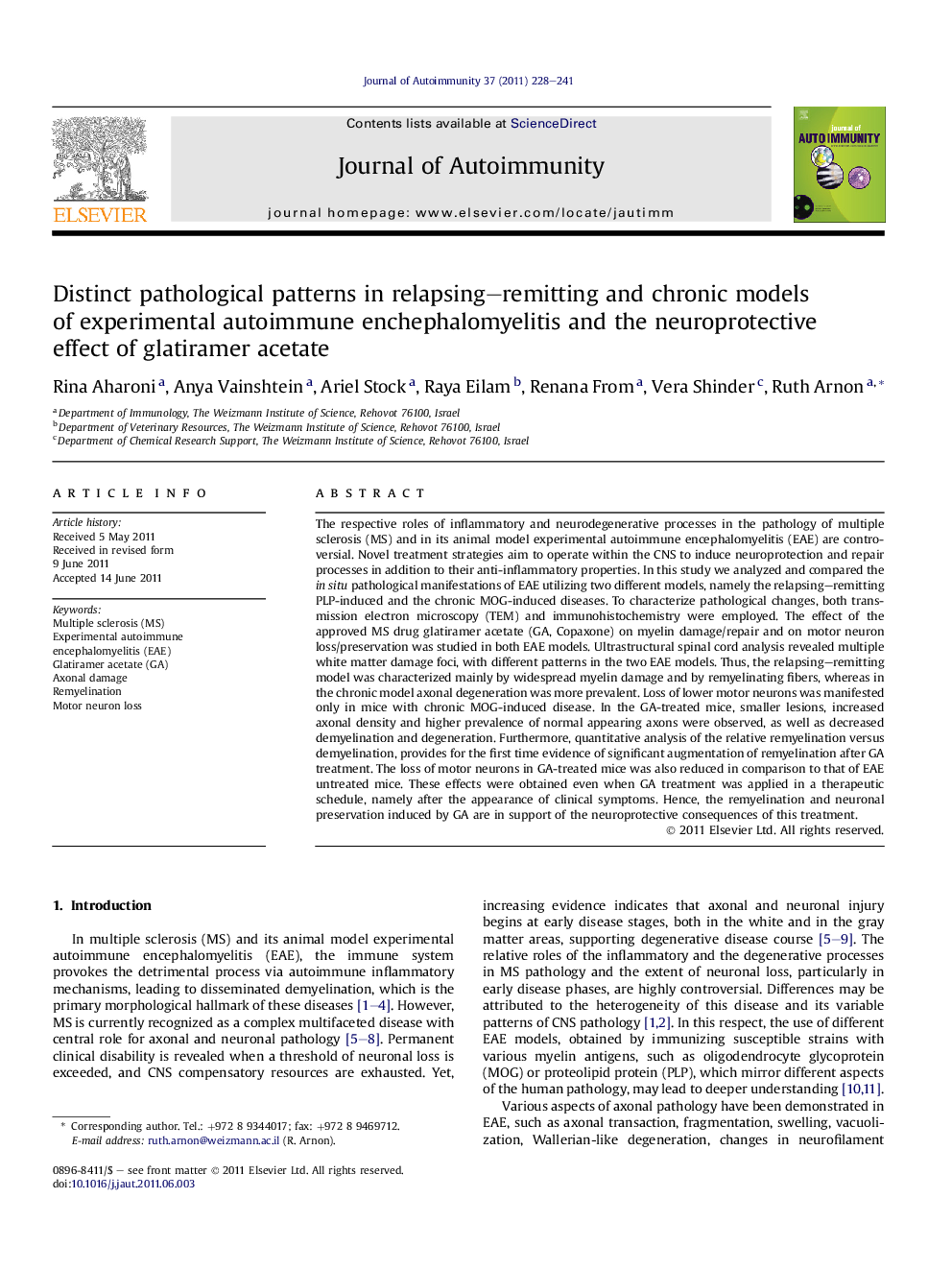| Article ID | Journal | Published Year | Pages | File Type |
|---|---|---|---|---|
| 3368014 | Journal of Autoimmunity | 2011 | 14 Pages |
The respective roles of inflammatory and neurodegenerative processes in the pathology of multiple sclerosis (MS) and in its animal model experimental autoimmune encephalomyelitis (EAE) are controversial. Novel treatment strategies aim to operate within the CNS to induce neuroprotection and repair processes in addition to their anti-inflammatory properties. In this study we analyzed and compared the in situ pathological manifestations of EAE utilizing two different models, namely the relapsing–remitting PLP-induced and the chronic MOG-induced diseases. To characterize pathological changes, both transmission electron microscopy (TEM) and immunohistochemistry were employed. The effect of the approved MS drug glatiramer acetate (GA, Copaxone) on myelin damage/repair and on motor neuron loss/preservation was studied in both EAE models. Ultrastructural spinal cord analysis revealed multiple white matter damage foci, with different patterns in the two EAE models. Thus, the relapsing–remitting model was characterized mainly by widespread myelin damage and by remyelinating fibers, whereas in the chronic model axonal degeneration was more prevalent. Loss of lower motor neurons was manifested only in mice with chronic MOG-induced disease. In the GA-treated mice, smaller lesions, increased axonal density and higher prevalence of normal appearing axons were observed, as well as decreased demyelination and degeneration. Furthermore, quantitative analysis of the relative remyelination versus demyelination, provides for the first time evidence of significant augmentation of remyelination after GA treatment. The loss of motor neurons in GA-treated mice was also reduced in comparison to that of EAE untreated mice. These effects were obtained even when GA treatment was applied in a therapeutic schedule, namely after the appearance of clinical symptoms. Hence, the remyelination and neuronal preservation induced by GA are in support of the neuroprotective consequences of this treatment.
► Two different EAE models mirror different aspects of Multiple Sclerosis. ► Myelin damage is characteristic to relapsing-remitting PLP-induced EAE. ► Axonal and neuronal pathology is the dominate pathology in chronic MOG-induced EAE. ► GA treatment leads to reduction in the characteristic pathology of both EAE models. ► TEM provides evidence for significant elevation of remyelination by GA treatment.
